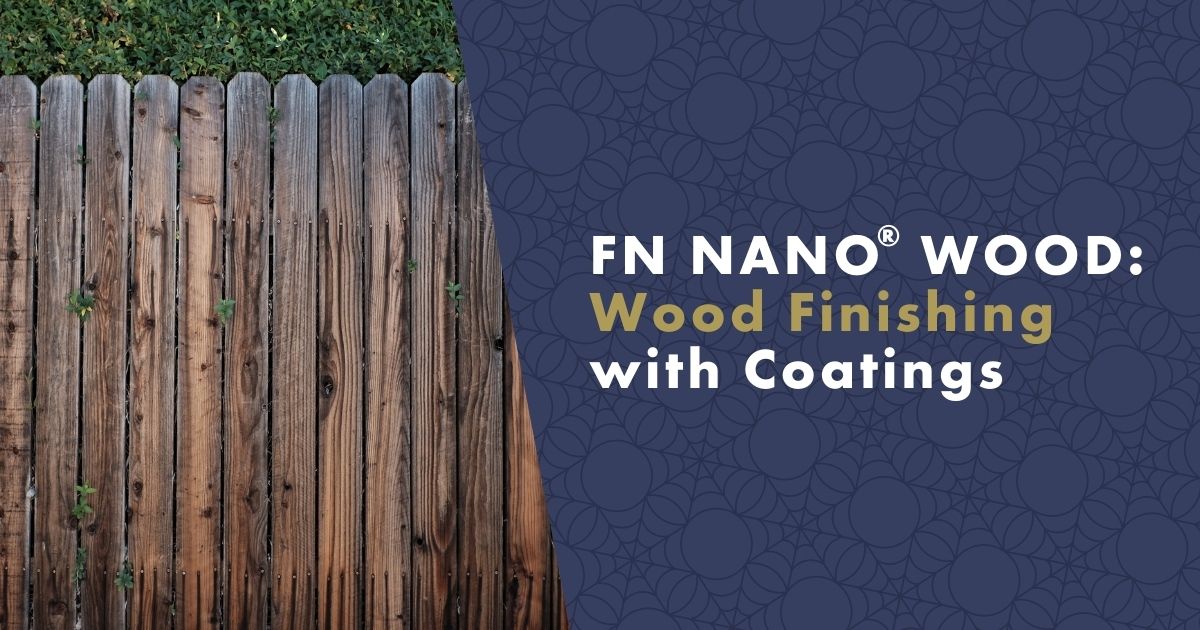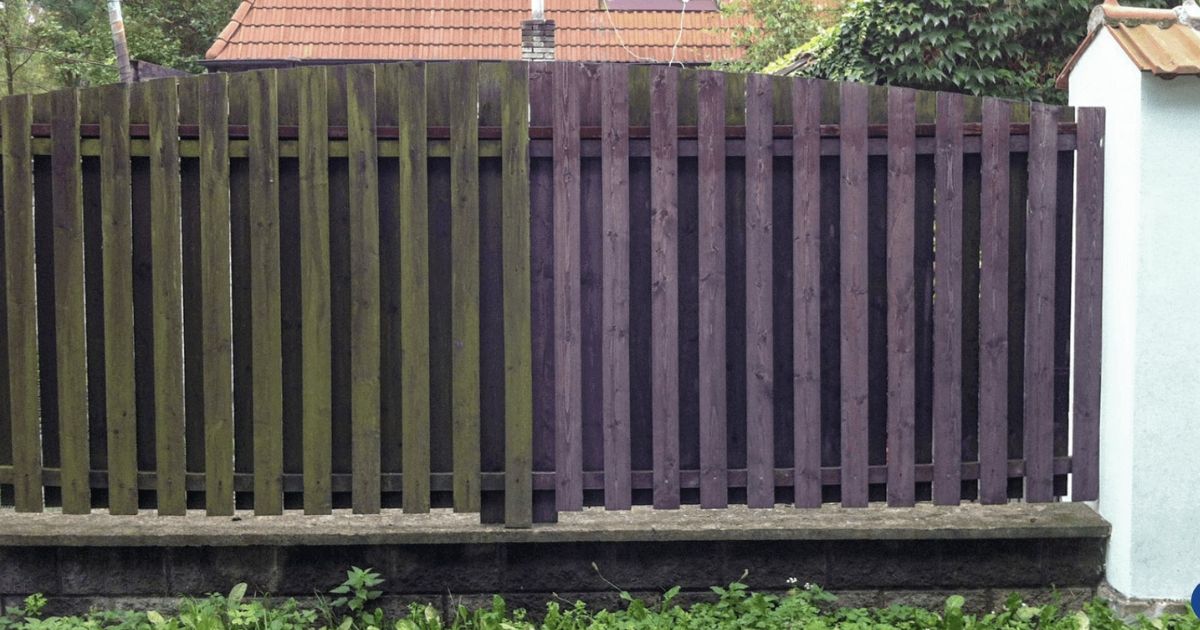Why is it necessary to treat wood? Wood, for centuries one of the main building and decorative materials, has been experiencing a renaissance in recent years and is becoming increasingly popular.

Why Is It Necessary to Treat Wood?
There are several reasons: wood looks good, its use aligns with the current sustainability trend (it's considered a renewable resource), and it also has excellent durability when treated properly. Wooden timber is typically treated against wood-boring pests and molds shortly after being cut. However, this is not a guarantee that the wooden elements of your house or fence won't begin to degrade over time.
Throughout the year, wood is exposed to dryness, moisture, wind, deep freezes, and tropical temperatures – as well as the UV rays. All of these factors lead to its gradual darkening and color fading. Therefore, it is necessary to treat the wooden surface to withstand all of these external factors.
Comparison of Wood Protective Coatings
On the market, you will find several types of protective coatings. Their composition, suitable applications (including advantages and disadvantages), are summarized in the following table:
|
Coating Type |
Chemical Composition |
Layer Transparency |
Advantages |
Disadvantages |
|
Clear Paint Coating |
Polyurethane base |
Transparent |
One coat with a brush is sufficient |
Greater exposure to sunlight leads to rapid degradation |
|
Clear Varnish Coating |
Alkyd-urethane base |
Transparent |
Long-term protection against UV radiation |
Requires multiple coatings |
|
Colored Varnish Coating |
Alkyd-urethane or acrylic base |
Almost none |
Long-term protection against UV radiation |
Requires multiple coatings, more challenging application |
|
Suspension of titanium dioxide nanoparticles |
Semi-transparent with a whitish tint |
Long-term protection against UV radiation, odor suppression, and air purification |
Requires multiple coatings, higher cost |
In terms of the level of protection provided, photocatalytic coating is the best choice. Let's take a closer look at how it works and how to apply it.
Article Tip: Discover the Magic of Photocatalytic Coatings: Cleaner Air and Pristine Walls
How Does Photocatalytic Wood Coating Work?
FN NANO Wood coating contains titanium dioxide nanoparticles (in the form of a suspension, solid particles dispersed in water). When exposed to sunlight's UV rays, these nanoparticles activate (a phenomenon called photocatalysis) and transform all organic substances they come into contact with into carbon dioxide, water, and mineral residues. In this way, they effectively suppress:
- Organic odors (e.g., decay),
- Exhaust fumes,
- Molds, bacteria, and other microorganisms that degrade wood,
- Pollen grains.
This is why this functional coating is referred to as self-cleaning – it can truly purify the air in interiors. The only condition is that the treated wood is exposed to sunlight for at least a while.
You can easily apply the photocatalytic coating even on wood surfaces previously coated with varnish. Additionally, the product has high air and moisture permeability. This prevents water accumulation in wooden elements, which could damage the structure.
Half of the wooden fence treated with FN NANO® WOOD after 5 years in a humid environment.
Preparing Wood for Protective Coating Application
Protective coatings should only be applied to dry, even, and clean wood. First, remove old paint and impurities from the surface using paint stripper and sandpaper. Remove any remaining coarse impurities with a brush.
To ensure good adhesion of the photocatalytic coating, you should remove grease and resin (for conifers) or tannins (for hardwoods) from the wood. Ordinary solvent works well for this purpose. Apply it to a clean cloth, thoroughly wipe the surface, and let the wood dry.
Any scratches or cracks in the wood's structure can be repaired with polyester putty, which withstands outdoor conditions. Use putty of the same color – the photocatalytic coating is relatively transparent. Then, smooth the wood surface gradually with sandpaper of increasing grit to achieve maximum smoothness.
The final step before coating is the application of a penetrating agent. It unifies the properties of the wooden substrate and allows the functional coating to adhere easily. The penetrating solution often contains biocidal ingredients that eliminate wood-boring insects and fungi and prevent further wood infestations.
#produkty#https://www.nanospace.store/search/?string=1082%2F5+L
Tip: Use a special foam roller for application, which won't drip or leak and will make working with nano coatings easier.
Applying Photocatalytic Protection
Before applying the protective coating, thoroughly mix it to evenly disperse the titanium dioxide nanoparticles. The suspension should not be diluted – apply it to the wood at the same concentration as it is in the package.
Apply it to the wooden surface in three layers – with a brush, roller, or spray gun. Wait at least an hour between each application for the suspension to dry and the nanoparticles to firmly adhere to the substrate. Make sure it doesn't rain during application, and the outdoor temperature should be between 10 and 25 °C.
You can also paint wood after treatment with varnish. However, when using FN NANO® Wood, you should wait at least 24 hours.
Key Takeaways from the Article
- Wooden elements in outdoor spaces are subject to degradation due to wind, rain, temperature fluctuations, and sunlight.
- To prevent wood from darkening and changing color, it's necessary to treat it with a protective coating. You can choose from paint, varnish, and photocatalytic coatings.
- Photocatalytic coating actively eliminates organic substances and microorganisms that damage wooden material. Additionally, it cleans the air from odors and smoke indoors. The core of the photocatalytic effect is the activation of titanium dioxide nanoparticles by UV radiation.
- Before applying the coating, wood should be treated by removing old paint and impurities, repairing any scratches, smoothing the surface with sandpaper, and applying a penetrating agent.
- Thoroughly mix the photocatalytic coating before application and apply it in three layers. Ensure there's no rain during application, and the temperature should be between 10 and 25 °C.
Sources:
- Antifungal capability of TiO2 coated film on moist wood
- Nanotechnology on wood: The effect of photocatalytic nanocoatings against Aspergillus niger

